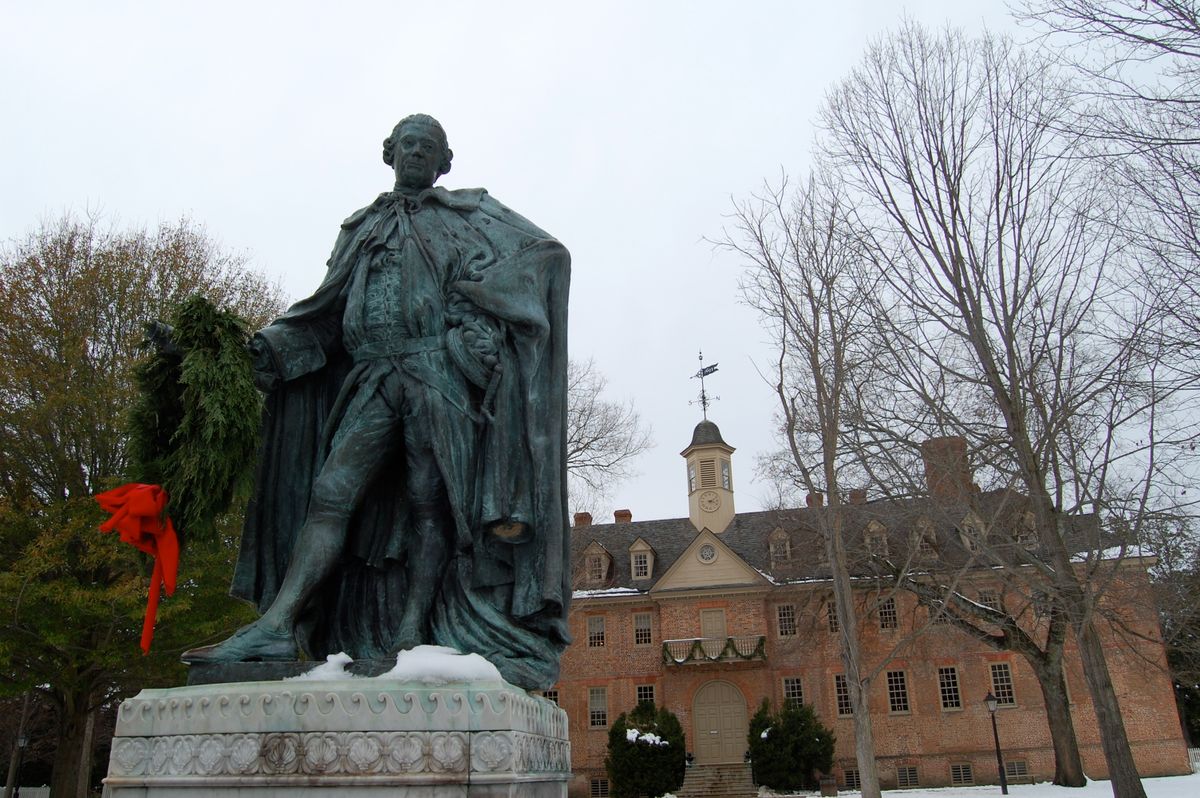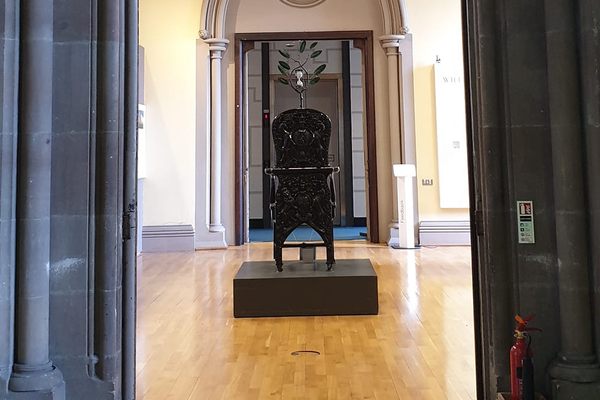About
Every year, students at the College of William & Mary gain good luck before exams by rubbing the “Lordly Pedal Extremity,” otherwise known as the foot, of Lord Botetourt’s regal statue upon its plinth. But the statue issues more than just good luck: It also has a knack for issuing commentary via social media.
The bronze statue in the college's Wren Yard maintains an active social media presence as @LordBot on both Facebook and Twitter, broadcasting a distinctively 18th-century voice while rightly claiming to be “the most metal inhabitant of the Wren Yard.”
He frequently comments on current and local events, including recent controversies regarding the role of statuary in public life. If you visit, Bot might even tweet about you. He often posts screenshots from William & Mary’s Wren Cam, noting the drollery of his many fans as they take selfies, or as he calls them, “plinthies.” While there, be sure to pronounce Botetourt as “Bot-a-tot,” like “tater tot.” Saying “Bot-a-tort,” like “court,” will give you away as a tourist.
Despite his cult following, the Lord Bot statue in the Wren Yard is not the original. The first version, which was paid for with public money in the late 18th century, suffered damage after the Revolutionary War. In 1958, it was moved to William & Mary’s Swem Library, where it can be viewed. The bronze replica that now stands in the Wren Yard took its place in 1993.
The real Lord Botetourt, Norborne Berkeley, was Virginia governor from 1768 to 1770 and served as Rector of William & Mary’s Board of Visitors, according to W&M Libraries’ Special Collections. His reputation of being a generous, courteous man who was loved by his constituents made him a rarity in the years leading up to the Revolutionary War.
Related Tags
Community Contributors
Added By
Published
January 3, 2018









































































